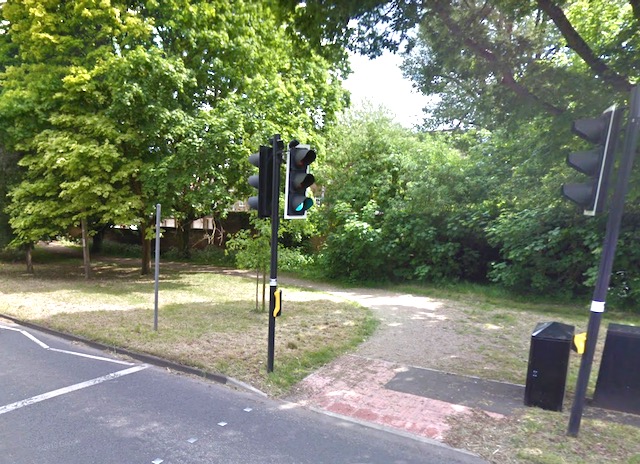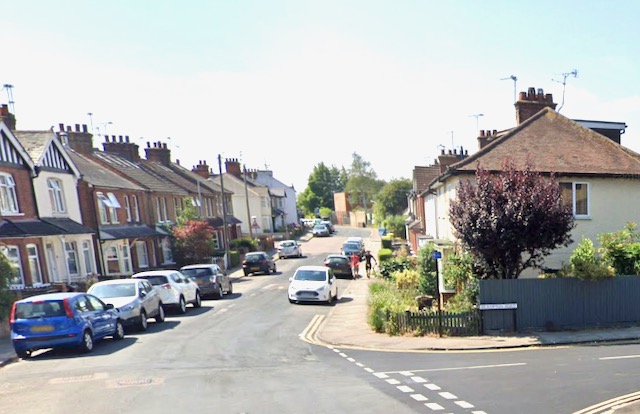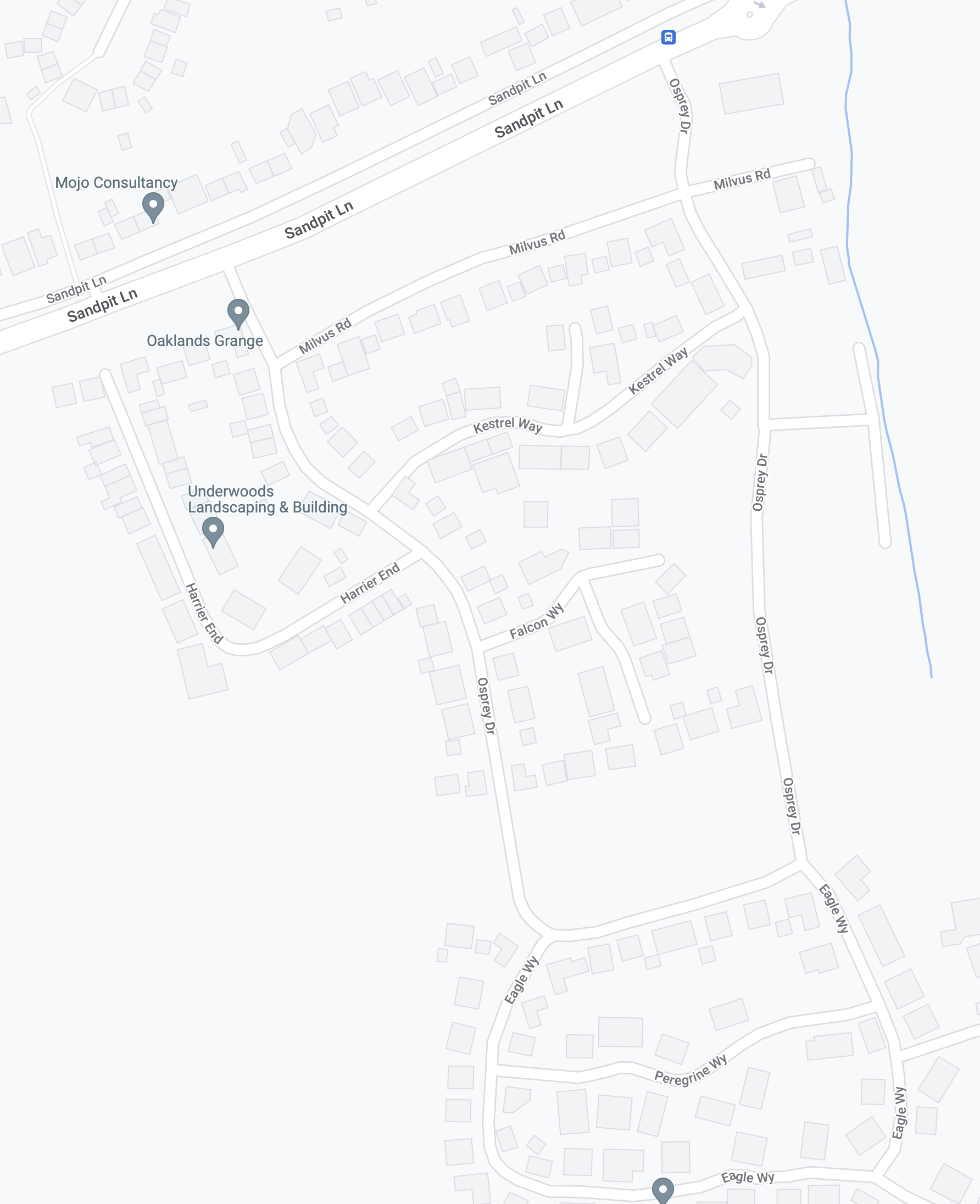Fleetville, Camp, Hill End, Marshalswick, Oaklands, Smallford, Cell Barnes, Cunningham, Ellenbrook, Granville, Beaumonts, Tyttenhanger
Updated: 9 April 2024
The "East End" reference harks back to 1912 when a prominent councillor, during a debate on the subject of enlarging the city's boundaries to take in Camp and Fleetville, likened the unfinished streets and general untidiness as similar to London's East End.
SAOEE blog
Entente Cordiale
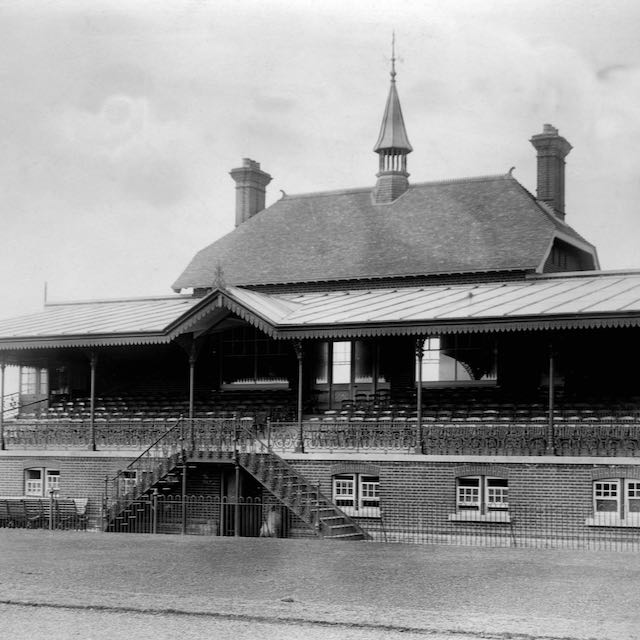
This week is the 120th anniversary of the Entente Cordiale between the governments of France and Great Britain. At the time, 1904, this was a significant event for both the country and St Albans.
de Havilland
New topic page added
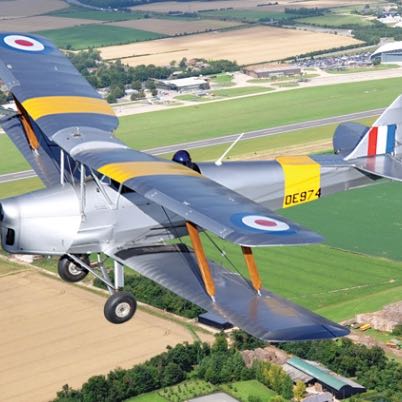
The story of the former de Havilland Aircraft Company is now a topic. It was one of two major aircraft manufacturers in the district, becoming part of Hawker Siddeley and then a contributor to British Aerospace.
Green district
Dense woodland from above
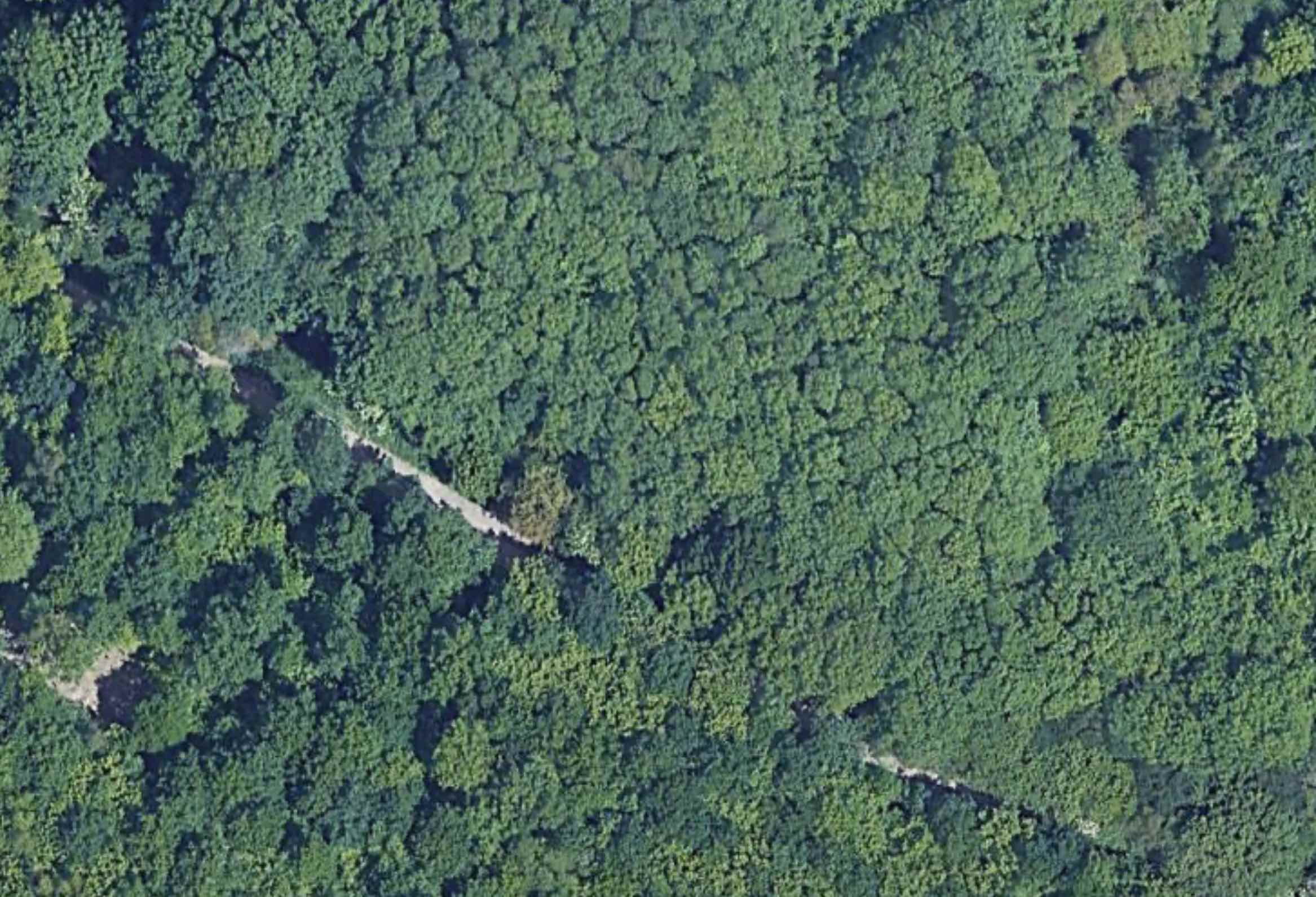
From above Jersey Farm Woodland Park. COURTESY GOOGLE EARTH.
Green news
We start with rivers; are they fit?

Trees are an engaging living resource. Some specimens need replacing; the majority don't; and thousands more are being added to the landscape. We also hope the water and drainage company is looking after the quality of our rivers and streams. Discover its viewpoint here.
Friday pic
"The Ghost Train"
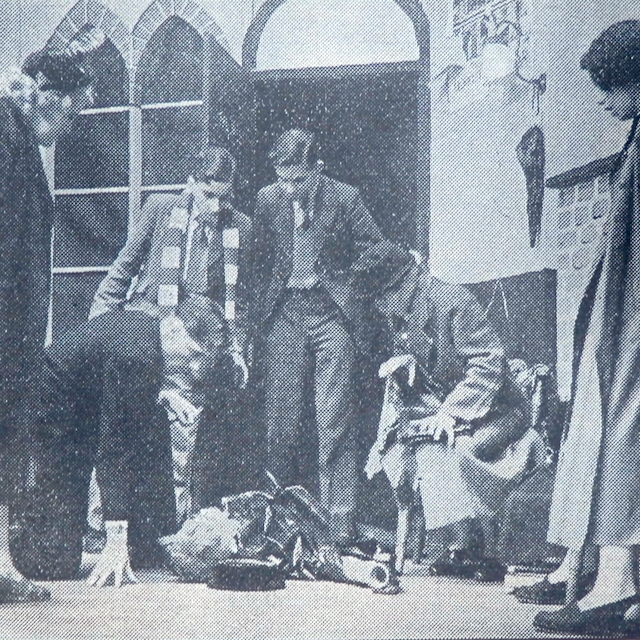
The first of two productions of this popular drama was presented at Beaumont Schools in 1950.
East end schools
Cunningham Infants School
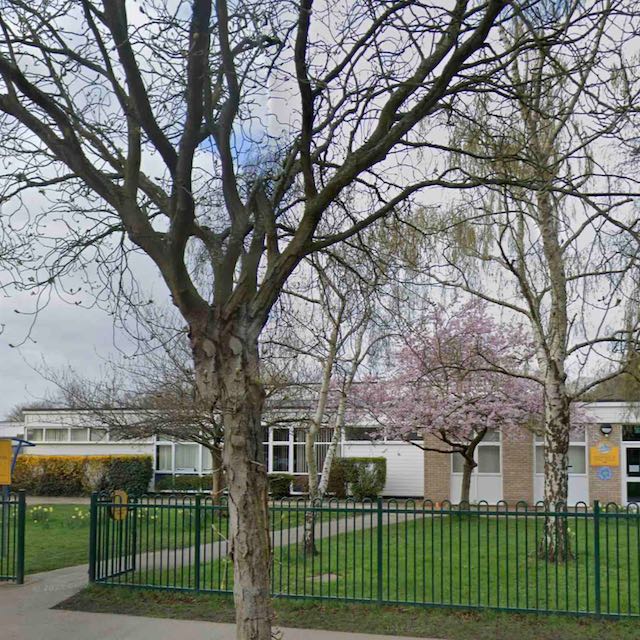
Photos and histories about our East End schools, and plenty of former pupils – and their teachers – identified. You may be among them; you could identify yourself, a friend or a relative.
100 Objects
Each object has a story to tell.

This bloom is most at home in Pinewood Close where, before the houses went up, Ernie Cooper raised and bred a wide range of dahlias. This is Jescot Lingold, one of a family of Jescot varieties.
Books
Nearly 60 books about St Albans
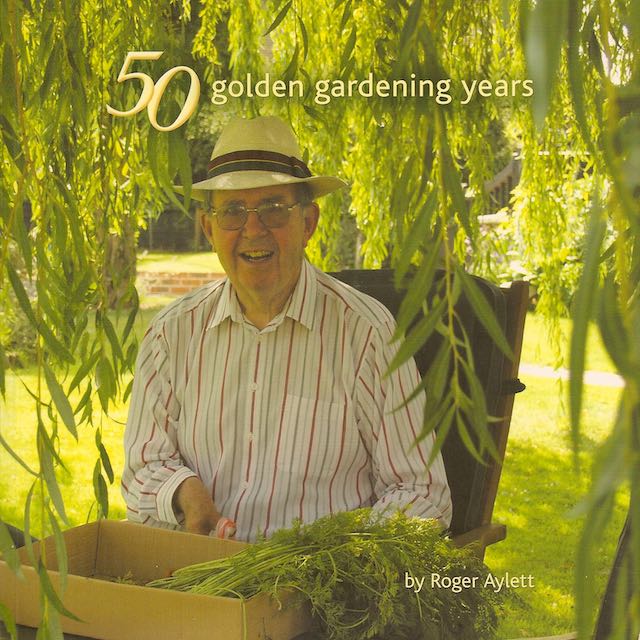
Many books have been written about St Albans. Not all are currently in print, however, but may be available from your local library. Each new book published is bound to be located on this page.
East End Maps
The groups of roads down to 1960.
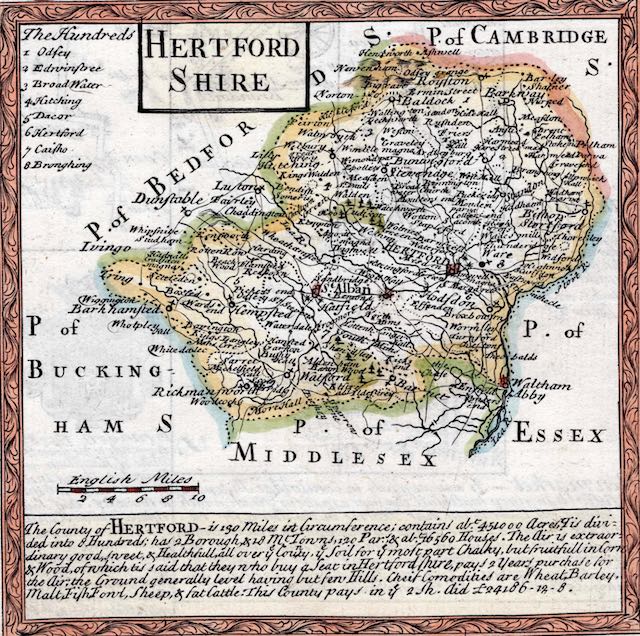
How old is a road? Was it a track? Has its name changed over time? When was it first laid out? This is a quick reference guide to the growth of of where we all live.
Topics
Plenty of choice for you to explore
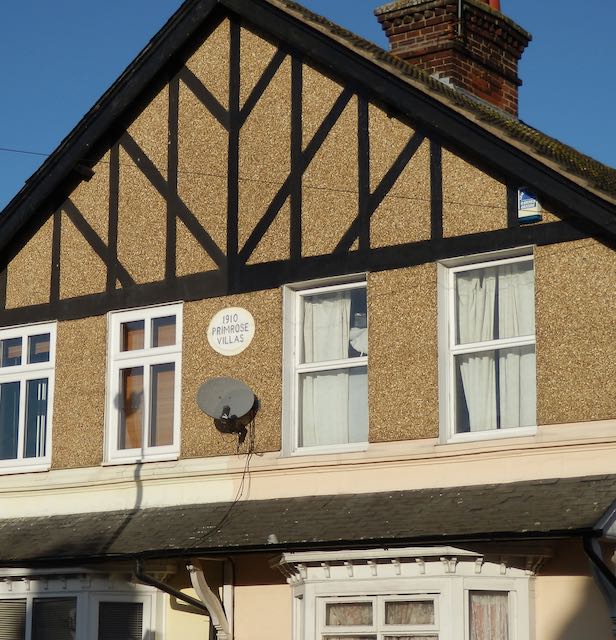
There are 25 pages of topics about the East End for you to discover, from districts to shopping streets, a turnpike and former hospitals, and a number of former factories of national renown.
Questions
but as yet no complete answers
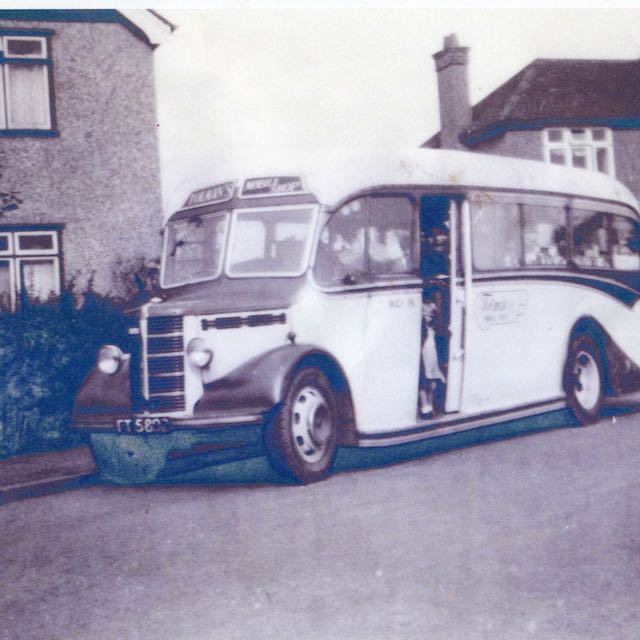
Please help us to identify, fill in information or add images. Here, for example, we have a coach in tourist retirement, converted into a mobile shop by Mr Tolman, somewhere in Camp. But who was Mr Tolman?
Your turn
Adding your own contribution
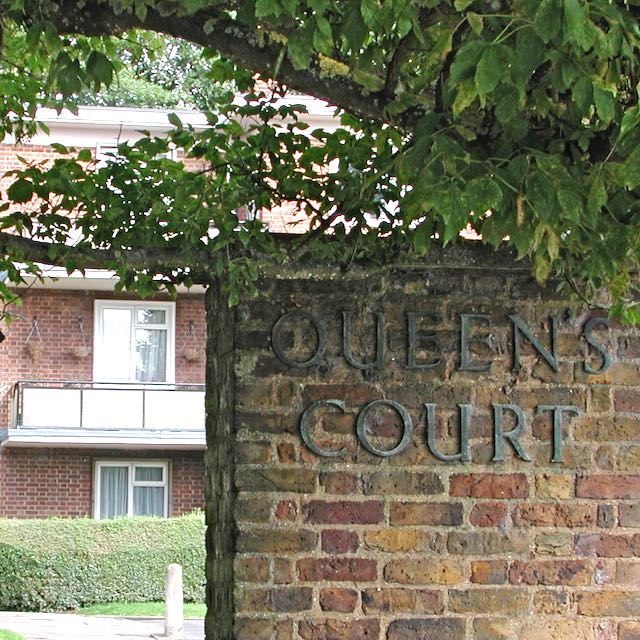
If you would like to add your own personal recollections about this vibrant part of St Albans you can do so via Get In Touch. Meanwhile, why not see what others have already contributed via Your Turn.
The Green Ring

A walking and cycling route encircling the city, with many sections off-road. Here is the section each of the Midland Railway, but there are over 6.5 km of route in total.
Local lottery

Fleetville Community Centre, Highfield Park Trust and Trestle Theatre are among groups who now have a fundraising local lottery page. We all have an opportunity to donate and hopefully win prizes.
Birds Eye View
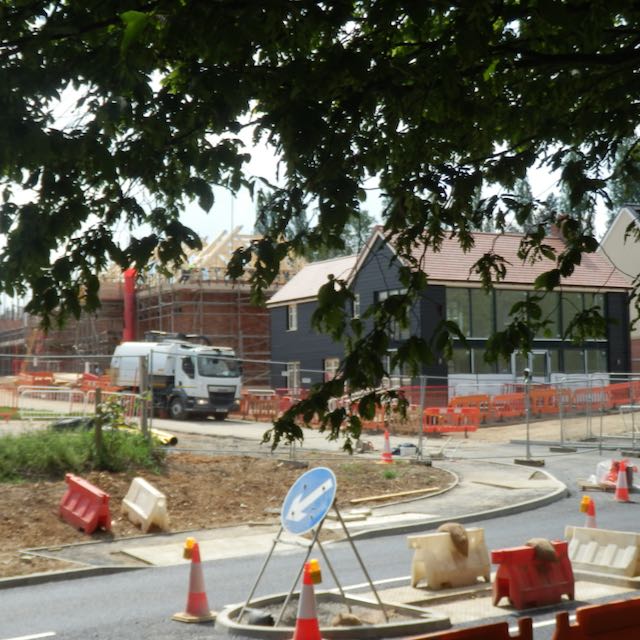
OAKLANDS GRANGE
Time has marched on since this Google Earth photograph. Forward of Sandpit Lane are now seven named roads between Beaumonts and Oaklands.
New Centre
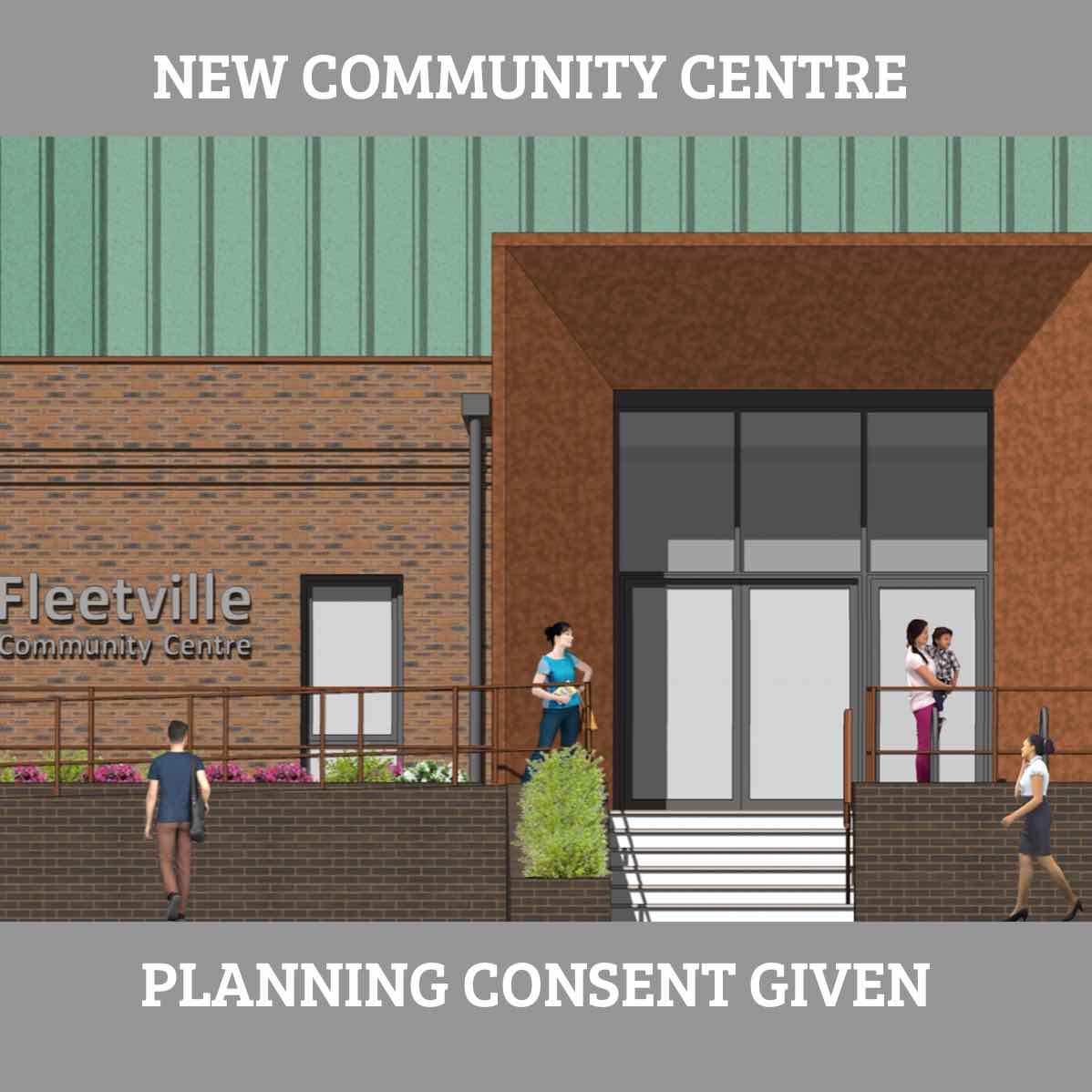
The planning application for the new Centre was approved. The Council, however, has delayed the building project for one year and is expected to proceed in 2023-24. It will be built on the site of the present 1942 community centre building.
Bike shop times 3
Due to open in October 2022 in a new shop unit is TREK BIKES. See also panel titled Montague Close. With the increased popularity of cycling of all kinds it is unsurprising that this business has been added to those of BC Cycles adjacent to Grimsdyke Lodge and St Albans Cycles at St Brelade's Place. All now offer a wide range of repair, maintenance, service and insurance options – owning a bike is not the cheap option it used to be!
Photo courtesy VIC FOSTER.
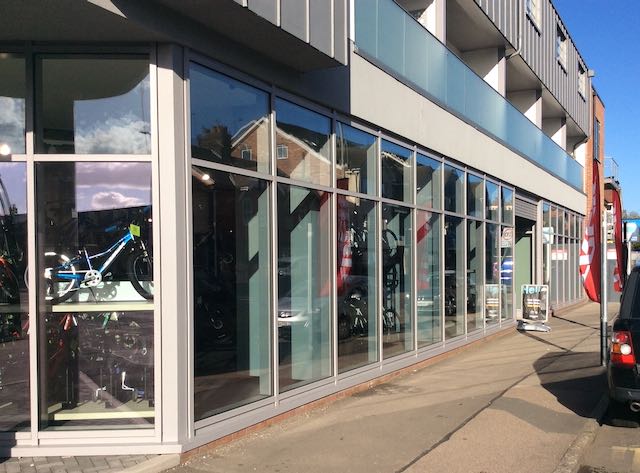
Trek joins Fleetville retail
An activity which enthuses the broadest spectrum of our local population for travel, leisure and sport. Perhaps gender, age and ethnicity might be better represented by cycle shops generally, not just the products they sell.
Found the shelters
History has recorded, through the recollections of living in Fleetville during the Second World War, the existence of tunnel shelters under the Community Centre and below the grass sward of the recreation ground.
Only one memory referred to brick street shelters in the road space of Royal Road, and that was not specific.
The publication of a series of RAF aerial photos in a flyover during 1946, now shows what appears to be a line of six such shelters on the left side of the roadway outside what used to be the wartime nursery and today is the community centre.
A larger version of the photograph appears on the Wartime East End page.

Shelters along Royal Road
Inside the orange rectangle can be seen a line of brick structures: six of them. The former nursery is at the left edge of the rectange.
Montague Close
In the heart of Fleetville nearly opposite the Rats' Castle the building complex which used to be a laundry, then a tile shop, and more recently the Emporium, has now become residential accommodation. But would you recognise it as such and does it fit into the Fleetville landscape?

A shed above a shop?
Destined to become retail on the ground floor, how did the residential design pass planning scrutiny?
Yet More Fleetville Homes
Cape Road and Burleigh Road lead to the former branch railway (now Alban Way). When the early houses gave out the space beyond was utilised by W G Bennett, builders. During and after the Second World War the site was occupied by Kia-Ora Motors before becoming Pratts building suppliers, and then PSR building materials.
Now, proposals for 37 new houses and flats by developer Cresswick have been given planning approval. There has been some concern that the number of units is very tight for the footprint, and there is also a very limited amount of space for car parking.

Developed by Horace Slade
Councillor Horace Slade purchased the land c1900, which has spent all of its life as an industrial site.
"A New Settlement"
You might have thought certain districts to be sufficiently distant from the east end of St Albans. But the Borough of Hertsmere has just published its proposed District Plan. In addition to the borough's existing towns and villages, it is proposing what it terms "a new settlement" right on the doorstep of Colney Heath and London Colney. Plans for homes, schools and community buildings in a phased approach between now and 2050. Let's hope the existing infrastructure can cope!

Hertsmere's new settlement
The map shows Hertsmere District. The top blue spot is the centre of the new settlement with London Colney and Colney Heath wrapped tightly around it. 6,000 homes by 2050.
A meeting of Sanders – and Moons
Fleetville Diaries, the local history people, hosted a magnificent celebration of two related families: descendants of Frederick Sander, the "Orchid King", and descendants of Henry Moon whose exquisite paintings of the orchids Sander bred were published in four massive tomes.
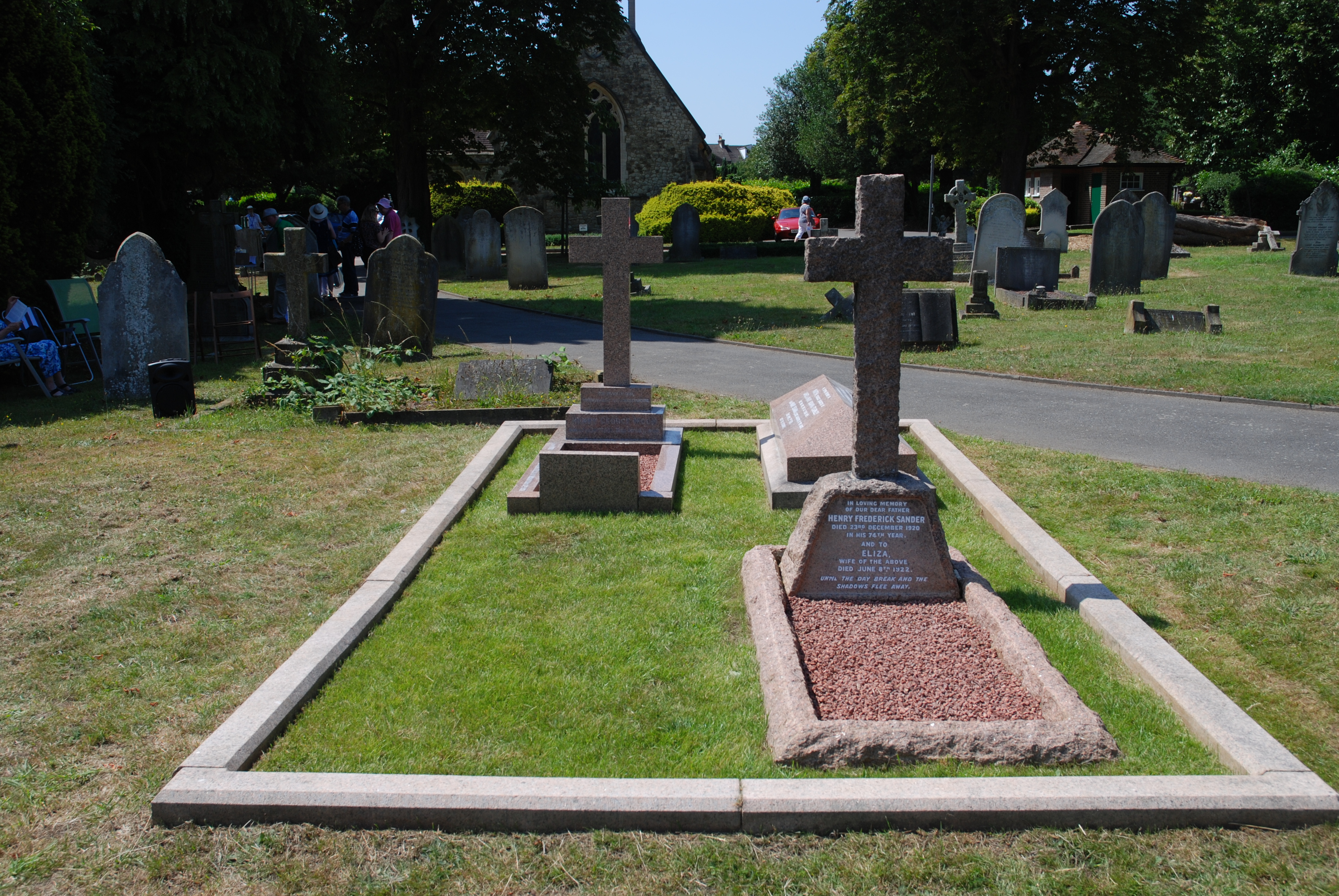

Sander & Moon Tribute Day
The result of Fleetville Diaries' project to renovate the family plot of the Sander/Moon families, was seen by eighty invited guests to Hatfield Road Cemetery and members of the Moon and Sander families.
Old Electricity Works
Final approvals have now been given to the Campfield Road site which once housed the city's first electricity works (1908), of which the locally listed frontage remains. The proposals, which had progressed through several iterations, include adaptations to the frontage building, and new blocks of 1, 2 and 3 bedroom flats on the former generating plant ground to the rear.
The site has Sphere Industry on the east side and is surrounded by the former Herts Advertiser HQ (now Phoenix House), Apex House, Centurian Court and Baker's Close.

Courtesy David Gaylard.
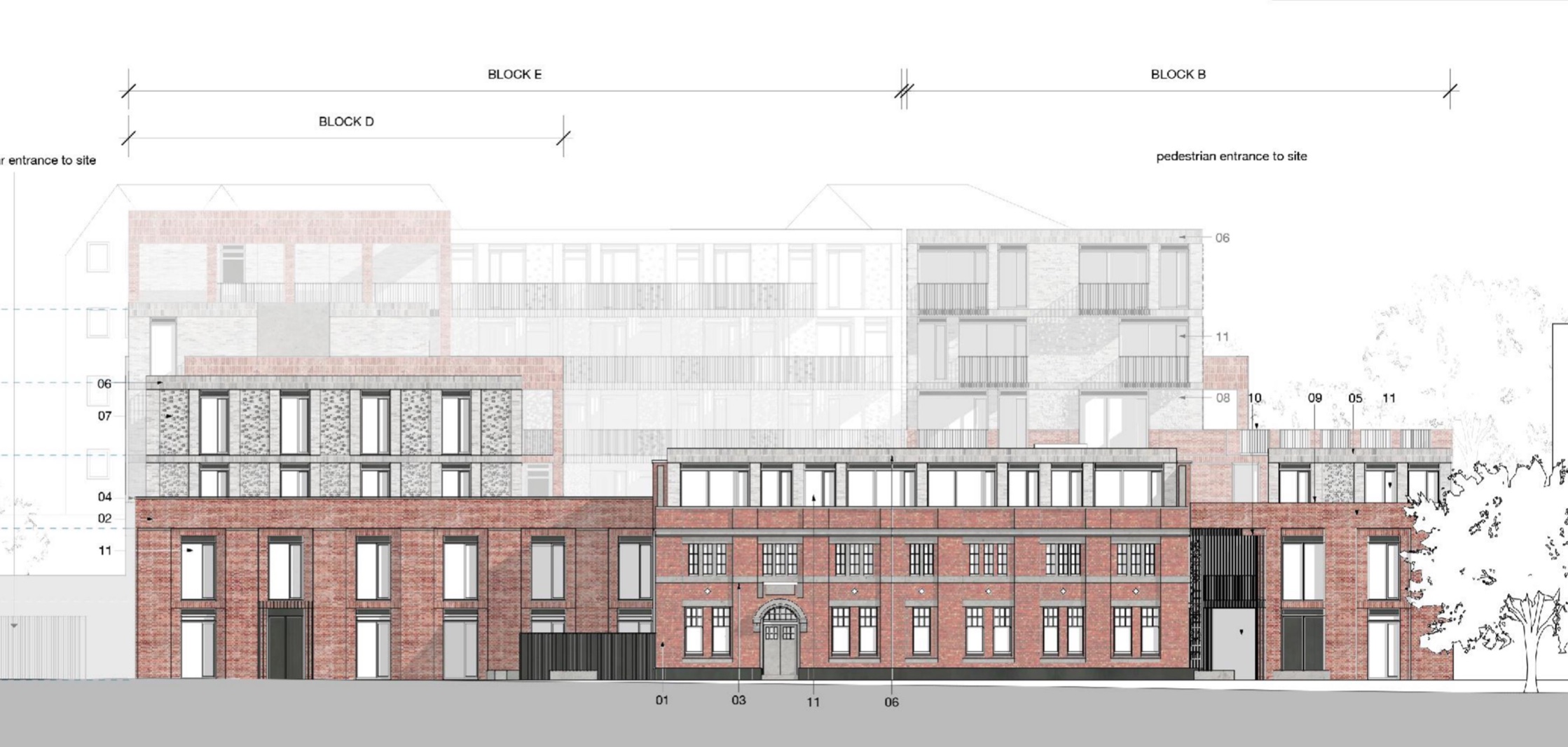
The "Sparks" development
Work has begun on the frontage building of the former electricity generating works in Campfield Road.
This might be a Tyttenhanger group
Peter has a copy of this photograph of a very casual-looking group, and he suspects this was a cricket team raised from the residents of Tyttenhanger Green, or perhaps from staff working at Hill End Hospital. Cell Barnes Hospital is discounted as the date of the picture is c1930, a few years before the opening of Cell Barnes Colony. One man has tentatively been identified as Henry Eames (front row centre).

Test Eleven?
Somehow this does not look like a football team. so let's think cricket. Is there anyone you might recognise?
Fleetville streetscapes
In front of St Peter's Farm and cottage a sweep of green and a pond faced the curve of Hatfield Road at the junction with Camp Lane and the turnpike side road toll house. The sale of this green space for housing, prompted W J Elliott of Chequer Street to create an attractive row of modest homes facing the young recreation ground at Clarence Park.
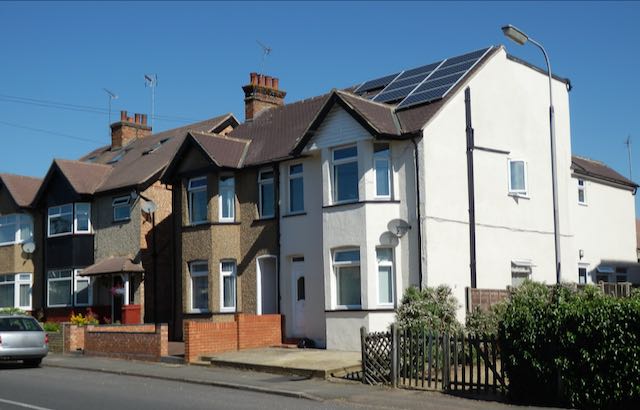
The Little Shop
This group once included (the white house) a little general shop, which served the hospital houses and New Camp estate.
Second editions under way
Did you miss the opportunity to grab a copy of either or both volumes of the first editions of St Albans' Own East End? Perhaps you borrowed a copy from a library, or hoped a friend or relative might offer you a copy as a birthday or Christmas gift? Or maybe you've made much of your patience and are sitting it out in hope.
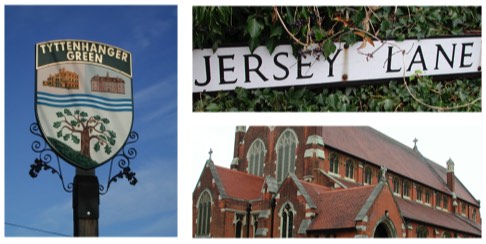
Welcome news
Preparations are well under way on second editions, including new content. Keep an eye on this panel for updates.
Coaching trips
Coaches everywhere take parties, groups and individuals to a variety of venues and destinations; even to and from employment, school and college. Even the most basic of daily school journeys use vehicles with a plush spec normally reserved for travel overseas.
Plush sixty years ago would have meant a vehicle such as this. Do you recall travelling in such a vehicle?

Leisure travel in the fifties
Albanian (then Premier Albanian), Brunts, Reg's, New Green's Travel, Crain's... Only later came Club Cantabrica and PPH Hire. Remember any others?
Highfield Park Trust 25
Highfield Park Trust has now celebrated its 25th anniversary, taking on the role of managing the former parkland of Hill End and Cell Barnes hospitals in 1996. Tim Abbott, Chair of HPT, stated, " In one sense 25 years is a long time, but in another it really isn't. We have done well but we must keep developing in order to reach our full potential."

Celebrate 25
Mayor Edgar Hill and Caroline Hill, Daisy Cooper MP and Trust Chair Tim Abbott at the celebratory gathering. Photo Highfield Park Trust.
We went to the Odeon Cinema

The fourth full cinema on this site, and the third building, currently the only remaining full-time film theatre in the city. Visit the Odyssey to witness today's comfort.
We went to the Chequers Cinema

First opened on the site of a former brewery operation in Chequer Street, the Chequers was the only cinema in the centre of St Albans.
We went to the Gaumont Cinema

The only cinema east of the Midland Railway and therefore in the East End, the Gaumont (formerly called the Grand Palace) was in the otherwise residential Stanhope Road.
Early Camp memory
Mr Gear's shop

Now number 155 Camp Road the above house was once a general store and post office, first opened by Thomas Gear in the first decade of the 20th century. Mr G Trottman then took over. Are there any photographs of number 155 as a shop?
Early Marshalswick
Commemorative trees

The residents' association for the formative Marshalswick estate around The Ridgeway west, purchased a number of flowering almond trees for planting in the roadside verges during the Festival of Britain year, 1951. Apparently 112 were acquired. Was there a significance to this number, or was it simply the number that could be accommodated or afforded along the roads which were planted?
Early school journey
School goes to the Gower

Mr Belcher, a teacher of Fleetville School, took a group of children to Port Eynon, on the Gower, in June 1955. If you were in that group, please tell us all about your trip. We know that the return journey was delayed by a rail strike, and it seems likely there was much confusion in the attempt to keep the school and the parents informed.
Usage links
Key pages
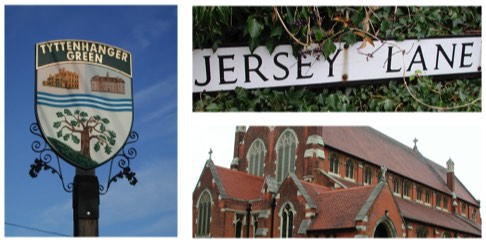
© 2024 St Albans' Own East End Mike Neighbour




